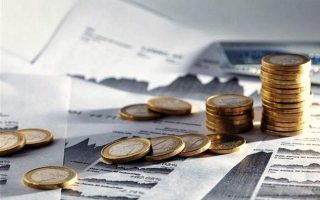Economic figures clearly point to structural weaknesses

In the last 10 years, with the sacrifices mainly of the weakest social groups, the Greek economy has healed many of the wounds opened by the derailment of the tainted three-year period of 2007-9, achieved an unparalleled fiscal adjustment, strengthened the production of internationally traded products and services, improved competitiveness (mainly thanks to cheap salaried work) and – following the measures passed by the interim government of Lucas Papademos in 2012 – resumed the creation of new jobs.
Changes, however, were made without getting rid of the parasitic character of the traditional economic model. The key economic figures in the first months of this year serve as a reminder.
I am referring to the twin jumps: the growth of GDP and the trade deficit. The first jump replenished GDP losses. In the second quarter of the year, GDP grew by 16.2% compared to the same period last year. It was the sixth largest increase among the 27 member-states of the European Union. The second jump was the rise of the trade deficit. In the first six months, exports reached 22.11 billion euros while imports soared to €34.5 billion, bringing the deficit to €12.38 billion, or 17.1% higher than the same period last year.
One might ask: Is it not reasonable for economic growth to widen the deficit at first? Perhaps. But a widening trade deficit does not always indicate growth. On the contrary, the fact that the faster return of GDP to pre-Covid levels was accompanied by an even greater increase in the trade deficit suggests that the recovery brought back the economy’s structural weaknesses. The low productivity of the economic model is what translates into low competitiveness and, as a result, widens the trade deficit.
After all, nothing substantial has changed. According to Alpha Bank’s Financial Studies Department, of the 16.2 points of the GDP rise, nine came from private consumption (an increase which, like GDP, is a base effect, following its collapse in the corresponding quarter of 2020) and 1.4 from public consumption (state support measures). In total, 10.4 percentage points corresponded to consumption and 1.5 points to investments.
There is also something else that reminds us of Greece’s parasitic economic model: It is called debt, it is the highest in the eurozone and remains stubbornly high, but we do not seem to want to talk about it.
Some, in fact, see it, as it were, from its “positive” side: “Look how cheaply we can borrow from the markets!” But, if we get our heads out of the clouds, we will see that this is because 75% of our debt is held by European institutions (who are outside the markets) and because the investment is very protected. Whoever buys Greek bonds does not risk losing money, despite them being in the junk category. That is because those buyers can unload them onto the European Central Bank at any time, which is exactly what happens.
You might say, “OK, but now we have the opportunity to utilize €110 billion in the coming years from the EU recovery fund, the NSRF and new common agricultural policy to rebuild the economy, to change its model.” Indeed, this is the big challenge. If we succeed, the country will change course. If we fail, following an initial two to three years of euphoria when everyone expects to get something out of the €110 billion, we will find ourselves with some worthwhile investments but stuck in the same, outdated economic model, with a digitized clientelistic state, greater inequalities and an acute social and political problem. What will happen remains to be seen.





